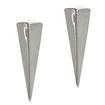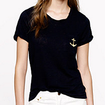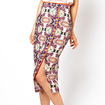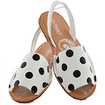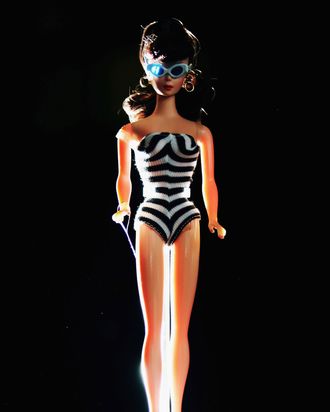
In a new Time article, writer Eliana Dockterman grapples with the world of body image and Mattel’s “girl toys” (a.k.a. plastic dolls that can be clothed, brushed, and toted around) by delving into the financials. A quick summary: Sales of the brand’s iconic Barbie doll, the one-time Queen Bee of the girl-toy market, have fallen for the fourth quarter in a row, and analysts believe that Mattel’s other toys, like American Girl and Monster High dolls — edgy, part-human, part-monster teen anti-Barbies — have contributed to the great Barbie decline, simply by being more attractive to toy buyers. With a slew of well-rounded, offbeat, personality-filled dolls now on the market, the writer hypothesizes about why young girls now like Barbies less. She decides that it might have to do with “body image.”
“Traditionally, Barbie has been criticized for her too-thin frame, heavy makeup, and impossibly large cup-size, and some parents may now be deciding to give their little girls dolls that are, shall we say, a bit more flawed,” Dockterman writes. She then cites a 2006 study from the University of Sussex in which 162 5-to-8-year-old girls were exposed to images of a Barbie, a full-figured doll named Emme, or no doll at all. The researchers found that “early exposure to dolls epitomizing an unrealistically thin body ideal may damage girls’ body image, which would contribute to an increased risk of disordered eating and weight cycling.”
American Girl dolls actually have girl bodies — “breast-less,” “chubby-cheeked,” she writes, yet their collective flaw is the exorbitant price tag for their accessories. Yet, her theory that Barbie is too skinny and thus selling poorly loses steam when she brings Monster High dolls into the mix. While they oppose the frilly, girly image that Barbie strives for, instead offering aesthetics that are meant to help embrace “freaky flaws,” they fall right alongside Barbie in the weight department. They possess impossibly thin body frames. Though at first glance Monster High dolls look like the anti-Barbie, they’re just Barbies in goth-inspired or monster-inspired garb. Dockterman concludes that the Barbie isn’t dead just yet — rather, the body-image focus that made Barbie the most popular toy for girls is still rampant in the market. Because all of these dolls affect body image — they’re just better disguised in expensive accessories, scarier makeup, and promiscuous clothes.


